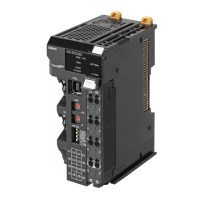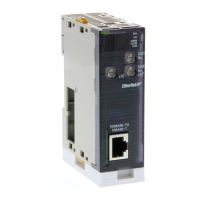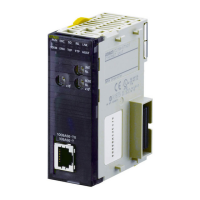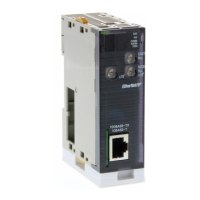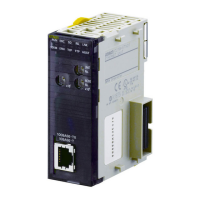xxii
Application Precautions 5
• Make sure that the polarity of terminals, the wiring of communications
paths, the wiring of the power supply, and the voltage for inputs and out-
puts are correct. If any of these are incorrect, it may result in damage.
• Perform the wiring correctly according to the instructions in this manual.
• Make sure that the connection distances are within specifications.
• Mount Units only after checking terminal blocks and connectors com-
pletely.
• Make sure that the communications cable connectors and other items
with locking devices are properly locked into place.
• Do not drop the Unit or subject it to abnormal vibration or impact, or it may
result in damage or malfunctioning.
• Use the special packing box when transporting the Unit. Ensure that the
product is handled carefully so that no excessive vibration or impact is
applied to the product during transportation.
• Check the user program for proper execution before actually running it
with the system.
• Do not pull on the cables or bend them past their natural bending radius.
• Before connecting communications cables, be sure to first turn OFF the
communications power supply, the power supply to the PLC, and the
power supply to all Slaves.
• Use only the specified DeviceNet cables as communications cables.
• Observe the following precautions when wiring the communications
cables.
• Wire the cables separately from the power lines or high-tension lines.
• Do not bend the cables excessively.
• Do not pull on the cables excessively.
• Do not place objects on top of the cables.
• Route cables inside ducts.
• Before touching a Unit, touch a grounded metallic object in order to dis-
charge any static build-up.
• Always enable the scan list before operation.
• Before clearing the scan list for a Unit set for automatic allocation of
remote I/O, make sure that it will not cause any problems for the I/O area
to be changed to fixed allocations.
• When adding a new node to the network, check that the new node’s baud
rate is the same as the baud rate set on the other nodes.
• When a CPU Unit or Special I/O Unit is being replaced, always transfer
any required data, such as DM and HR area settings and parameters,
before restarting the system.
• Follow the specifications for the communications distances and the num-
ber of connected Units.

